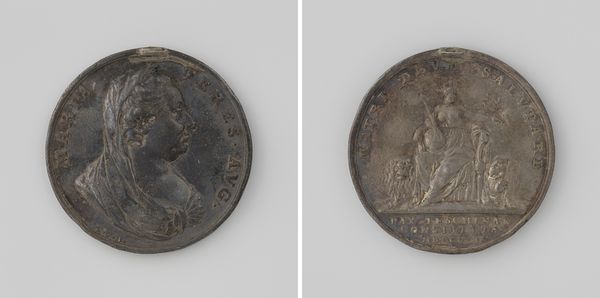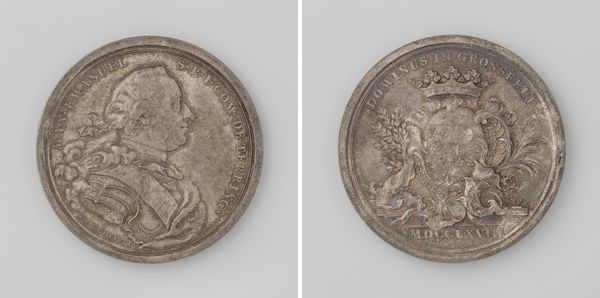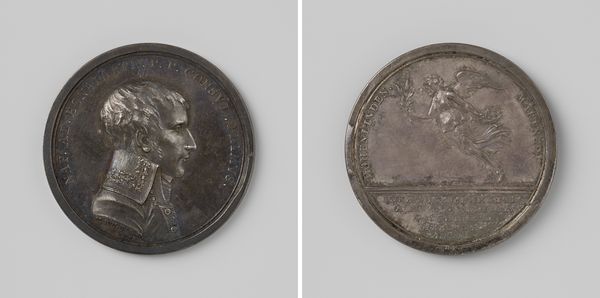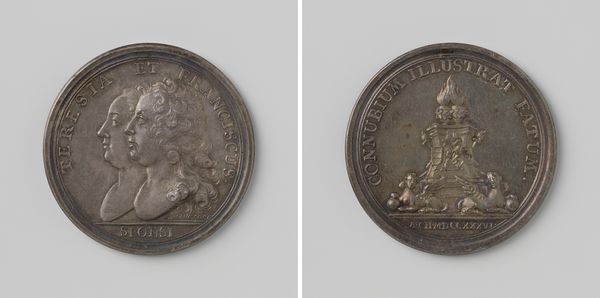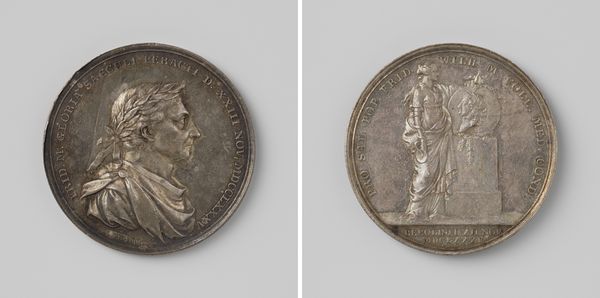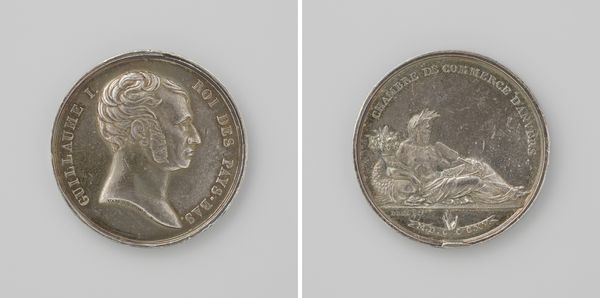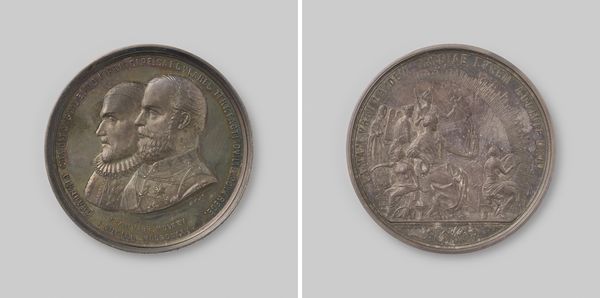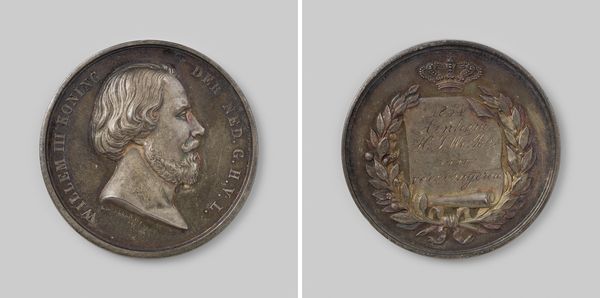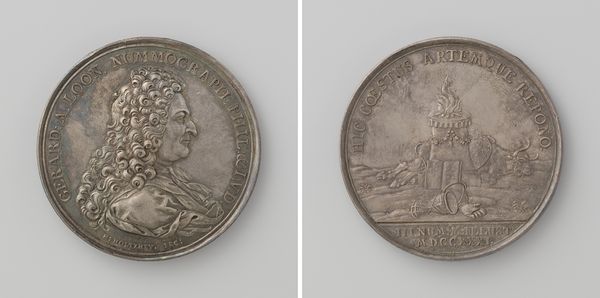
metal, sculpture
#
portrait
#
baroque
#
metal
#
sculpture
#
sculpture
#
history-painting
Dimensions: diameter 5 cm, weight 56.68 gr
Copyright: Rijks Museum: Open Domain
Curator: Here we have a medal created in 1668 by Jean Warin, commemorating the conquest of the County of Burgundy in ten days. Editor: It has a weighty, almost solemn feel to it. The silvery metal gives it a subdued luster, which suits the historic subject matter perfectly. Curator: Warin was a master of metalwork. This medal showcases his skill in capturing detail, even in a relatively small format. Notice the portrait of Louis XIV on one side? Editor: Yes, the king’s profile is quite striking, and the elaborate wig and drapery certainly speak to the luxury and power associated with the court. I wonder about the process of striking a medal like this—the labor involved, the molds. Was it a purely royal commission? Curator: Absolutely, this was commissioned to reinforce royal power, demonstrating Louis XIV’s military successes, his ability to rapidly conquer territories, which would certainly contribute to constructing a heroic image of the monarch, reinforcing absolutist claims. The inscription around his head further supports that. Editor: The reverse depicts a chariot of Victory pulled by horses, a potent symbol of military might. And the depiction of Burgundy beneath? Curator: A classical visual trope, sure, but it served its propaganda purpose in celebrating France's swift victory and expanding territorial control in a way that associated the monarch with power. Medals like this served as tools of diplomacy and gifts, circulated amongst elites. Editor: I imagine they would have been incredibly tactile. Something about holding that physical manifestation of power… it makes it much more tangible than, say, a painting of a similar theme. Curator: A point well taken. The medal's function was tied directly to promoting a very particular historical narrative of swift victory under Louis XIV. These objects help us understand how societies shape collective memory. Editor: Thinking about the materiality, it brings a completely different texture to how one understands royal representation at this moment in history. Curator: Indeed. Examining its purpose reveals the intricate relationship between art, politics, and power. Editor: Right, something as ostensibly simple as a metal disk shows so much complexity when you consider its material history and broader context.
Comments
No comments
Be the first to comment and join the conversation on the ultimate creative platform.


